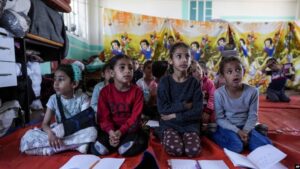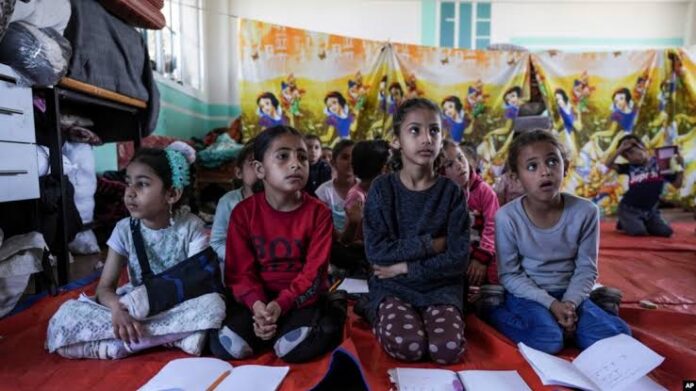The ongoing conflict in Gaza has dealt a devastating blow to its education system. Recent reports highlight the scale of destruction and its impact on students’ lives and futures.

Since October 2023, Israel’s military actions have severely damaged Gaza’s schools. The United Nations reports that 93% of Gaza’s 560 schools have been either destroyed or damaged. This includes government, private, and UN-run schools. At least 340 schools have been directly hit by Israeli strikes.
The human cost is staggering. Over 5,000 students of various grades have been killed, including at least 450 high school seniors. More than 260 teachers have also lost their lives. These losses have left deep scars on Gaza’s education community.
The destruction has disrupted crucial academic milestones. This year, 39,000 Palestinian students in Gaza were unable to take their high school matriculation exam (tawjihi). This exam is vital for university admissions and future career prospects.
Sara, an 18-year-old aspiring doctor, shared her heartbreak: “I was supposed to be happy at this time, celebrating the completion of my high school. I dreamed of being among the top students.” Her story reflects the dreams put on hold for thousands of Gaza’s youth.
The attacks on schools have been particularly brutal. In one recent incident, over 100 people, mostly women and children, were killed when al-Tabin school in Gaza City was bombed. Many schools, once places of learning, have become shelters for displaced families, only to be targeted in strikes.
Education has long been a source of pride and resistance for Palestinians. Despite poverty and conflict, Gaza has produced top-scoring students in national exams. Studying by lamplight during power outages or continuing lessons during bombings became symbols of resilience.
The current destruction goes beyond physical damage. It threatens to erase cultural knowledge, history, and identity passed down through generations. Some experts view this as “scholasticide” – the deliberate destruction of educational institutions as part of a broader campaign against a population.
For many young people in Gaza, education represented hope for a better future. Ihsan, an 18-year-old who dreamed of becoming an engineer, now sells desserts on the street to help his family survive. “I have lost my dreams,” he said. “All of my dreams now have been turned into ashes.”
Despite the devastation, the desire for education persists. Six-year-old Masa repeatedly asks her mother to buy her a schoolbag and uniform, even though her school no longer exists. This determination reflects the broader Palestinian spirit of “sumud” (steadfastness).
Looking ahead, rebuilding Gaza’s education system will be a monumental task. Hundreds of Gaza scholars and university staff recently stated that reconstructing academic institutions is “not just a matter of education; it is a testament to our resilience, determination, and unwavering commitment to securing a future for generations to come.”
The road to recovery will be long, but many Palestinians remain committed to rebuilding their schools and educational opportunities, even if they must start from tents as they did in the past.




